The Way to the Stars (1945) | Directed by Anthony Asquith
"The Way to the Stars," also known as "Johnny in the Clouds," is a 1945 British war film directed by Anthony Asquith. The film unfolds against the backdrop of World War II and is set in a Royal Air Force (RAF) Bomber Command station. It primarily focuses on the relationships and experiences of the RAF pilots and ground crew stationed at the base.
The film features an ensemble cast portraying a diverse group of characters, including pilots, ground crew, and civilians. Notable characters include Squadron Leader Peter Penrose (Michael Redgrave), Flight Lieutenant David Archdale (John Mills), and Nurse Iris Winterton (Rosamund John).
The characters' interactions and relationships provide a human touch to the war narrative.
Friendship and Camaraderie:
The film explores the bonds of friendship and camaraderie among the RAF personnel, highlighting the shared experiences, fears, and losses they endure during the war.
The characters find solace and support in their connections with each other, creating a sense of unity in the face of adversity.
Romantic Subplots:
Romantic subplots, particularly the relationship between Peter Penrose and Iris Winterton, add emotional depth to the narrative. The challenges of maintaining relationships during wartime are depicted with sensitivity.
Aerial Sequences:
"The Way to the Stars" incorporates thrilling aerial sequences, capturing the intensity and danger of air combat. The film benefits from realistic depictions of flying and bombing missions, adding a sense of authenticity to the war scenes.
Homefront Perspectives:
The film provides glimpses into the lives of civilians on the homefront, emphasizing the impact of war on families and communities. This dual perspective enhances the storytelling by depicting the war's effects beyond the battlefield.
Cinematography and Visuals:
The cinematography, directed by Derrick Williams, captures both the sweeping landscapes and the intimate moments within the RAF station. The film balances grand aerial shots with poignant close-ups, effectively conveying the emotional spectrum of wartime experiences.
Score and Music:
The musical score, composed by Nicholas Brodzsky, complements the film's emotional tone. The music enhances key scenes and contributes to the overall atmosphere, creating a poignant backdrop for the characters' journeys.
Realism and Authenticity:
"The Way to the Stars" is praised for its commitment to realism and authenticity. The film avoids glamorizing war and instead focuses on the human side of the conflict, portraying the challenges and sacrifices faced by those involved.
The film received critical acclaim for its storytelling, performances, and the portrayal of the psychological and emotional toll of war.
The ensemble cast's performances, in particular, were lauded for bringing depth and nuance to their respective roles.
"The Way to the Stars" remains a classic war film that has endured over the years. Its emphasis on character-driven storytelling and the human cost of war contributes to its lasting impact.
Released in the final years of World War II, the film captures a snapshot of the wartime experience, offering audiences a reflection on the sacrifices made by those serving in the RAF.
"The Way to the Stars" is a poignant and realistic portrayal of wartime experiences, blending personal dramas with thrilling aerial sequences. The film's enduring legacy lies in its ability to humanize the individuals involved in the conflict, making it a compelling exploration of friendship, love, and resilience in the face of war. As a classic war film, it stands as a testament to the enduring impact of human connections amidst the challenges of a tumultuous era.
-
 44:03
44:03
TV Reactions
4 months agoDas Boot Directors Cut (Part 1/2): Unveiling the Brilliance of this WW2 Movie #dasboot #warmovies
1271 -
 28:52
28:52
TV Reactions
4 months agoDas Boot Directors Cut (Part 2/2): Unveiling the Brilliance of this WW2 Movie #dasboot #warmovies
971 -
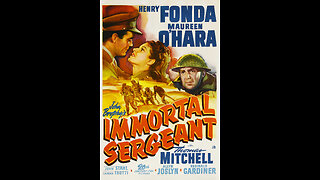 1:27:06
1:27:06
Classic Films Archive
3 months agoImmortal Sergeant (1943) | Directed by John M. Stahl
234 -
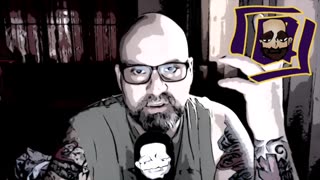 36:19
36:19
the Objective Jerk
1 month agoSNYDER'S STYLISTIC SAGA: Dissecting the Director's Cinematic Language
36 -
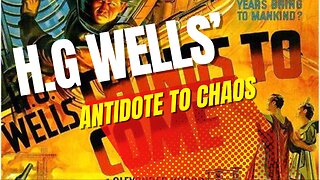 40:05
40:05
ThedeclineandfallofbritishSciFi
4 months agoBeyond War: H.G. Wells' Visionary Odyssey in 'Things to Come
20 -
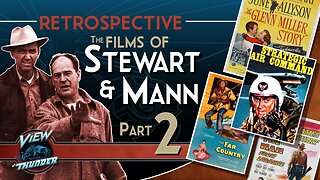 8:28
8:28
ViewThunder
2 months agoJames Stewart & Anthony Mann - PART 2 - Movie Reviews / Retrospective
20 -
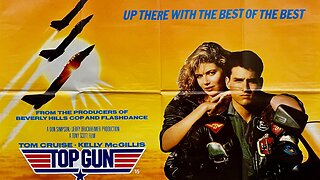 5:56
5:56
TheBlackfordBookClub
4 months ago $0.01 earned"Top Gun" (1986) Directed by Tony Scott
40 -
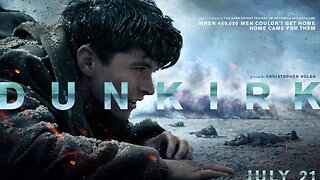 5:39
5:39
TheBlackfordBookClub
4 months ago $0.18 earned"Dunkirk" (2017) Directed by Christopher Nolan
62 -
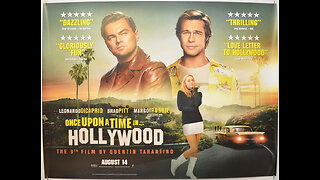 9:34
9:34
TheBlackfordBookClub
4 months ago $0.07 earned"Once Upon a Time in Hollywood" (2019) Directed by Quentin Tarantino
90 -
 9:02
9:02
TheBlackfordBookClub
4 months ago $0.02 earned"Black Swan" (2010) Directed by Darren Aronofsky
45